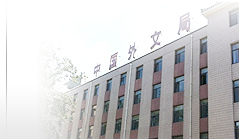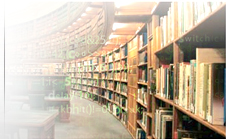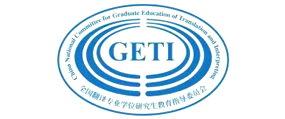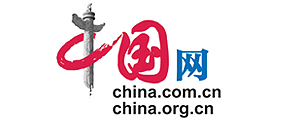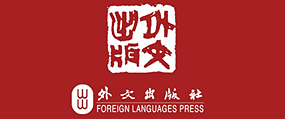译论研究
语法隐喻在翻译研究中的应用 / 黄国文 5
语域流变、互文干扰与翻译策略:以几则奥/亚运会宣传用语的翻译为例 / 王东风 10
The Gloosy Ganoderm: Systemic Functional Linguistics and Translation / M.A.K. Halliday 17
译史纵横
天朝话语与乔治三世致乾隆皇帝书的清宫译文 / 王辉 27
索隐式翻译研究 / 岳峰 程丽英 33
图书评介
西方翻译理论的新作—— 《双语文本:文学自译史及其理论》 / 陈吉荣 38
索百年之文,引明日之路—— 评《翻译资料与翻译研究丛书》 / 刘畅 赖思维 43
译海钩沉
爱伦·坡作品在中国的译介—— 纪念爱伦·坡200周年诞辰 / 曹明伦 46
翻译教学
取精用弘,图远务实——简谈翻译硕士专业教材《笔译理念与策略精讲》编撰原则 / 何刚强 51
考试园地
全国英语专业八级口译考试评判标准评议 / 黄晓佳 王建国 54
全国翻译专业资格(水平)考试分析及其对翻译队伍建设的启示 / 蔡啸 60
译技探讨
英伽登的层次理论与Burton Watson英译中国古诗 / 魏家海 63
从“父与子”谈《狼图腾》中的拟亲属称谓及其英译 / 王颖冲 68
“科学发展观”英译探微 / 谢桥 71
“Independence”抑或“Secession”,同乎,异乎? / 于丹翎 73
学术争鸣
是“补偿”、“赔偿”还是“免责”?—— 浅谈indemnity一词的中文表述 / 龙长祥 76
《家庭治疗—理论与方法》译著主要错误评析 / 权朝鲁 78
《笑话的背后》英译文的商榷之处 / 俞善林 81
自学之友
·译家译作·
英译汉:Street Life(Adam Gopnik) / 叶子南 译注 83
翻译导读:注释与解读 / 叶子南 85
汉译英:军嫂(刘万里) / 黄俊雄 译注 87
翻译导读:达意“优”“美”能传神 / 黄俊雄 89
词语选译
中国译协对外传播翻译委员会中译英研讨会最新讨论词汇选登 91
英文摘要 92
第二十一届韩素音青年翻译奖竞赛参赛原文及竞赛规则
参赛原文及参赛券 94
竞赛规则 封底
信息广角
本刊稿约(16) 本刊邮购信息(32)
《第十八届世界翻译大会论文集》邮购信息(62)
其它(42、45、50、82、93)
中文摘要
语法隐喻在翻译研究中的应用*
黄国文 中山大学
摘 要:语法隐喻是系统功能语言学理论中的一个重要概念。本文的目的是把这一概念运用于翻译研究之中。本文认为,在把一种语码转换成另一语码的过程中,翻译 者面临的是多种语言形式的选择。在这些可供选择的形式中,有些就形成了本文所讨论的一致式与隐喻式的配对。本文的研究表明:就语言形式所表达的意义而言, 一致式与其相对应的隐喻式是为不同的交际目的、交际需要服务的。区分一致式与隐喻式,可以帮助我们更加清楚地区分它们各自不同的交际功能。
关键词:语法隐喻;一致式;隐喻式;翻译;系统功能语言学
中图分类号:H059 文献标识码:A 文章编号:1000-873X (2009)01-0005-05
语域流变、互文干扰与翻译策略:以几则奥/亚运会宣传用语的翻译为例*
王东风 中山大学
摘 要:本文提出语域流变和互文干扰的概念,对一词多义的语域流变和互文干扰进行分析,在比较我国的奥运口号、亚运口号和韩国的亚运口号的翻译中,探讨在语域流变的情况下如何对翻译选择进行风险评估,规避可能出现的消极互文干扰。
关键词:语域流变;互文干扰;一词多义
中图分类号:H059 文献标识码:A 文章编号:1000-873X (2009)01-0010-07
天朝话语与乔治三世致乾隆皇帝书的清宫译文
王 辉 深圳大学
摘 要:乔治三世致乾隆皇帝的国书是马戛尔尼访华事件(1792-1794) 中的重要文献。这份文献的翻译过程曲折而耐人寻味,保存在清宫档案中的中文副本显示,英方以对等的姿态表达友好交往意愿的国书,经由翻译,变成了向中方输 诚纳贡的英吉利国表文。本文从话语的角度,对国书及其译文进行解读,以揭示从国书到表文的奇特变化,其实是天朝朝贡话语运作的必然结果。
关键词:乔治三世;乾隆;国书;翻译;话语
中图分类号:H059 文献标识码:A 文章编号:1000-873X (2009)01-0027-06
索隐式翻译研究*
岳峰 福建师范大学 程丽英 莆田学院
摘 要: 本文评介译界较少提及的索隐式翻译并基于哲学阐释学分析该独特的现象。明清时期以耶稣会士为主体的基督教传教士出于“合儒”动机,以类似《圣经》诠释学的 独特索隐手法,在儒家经典中探求天主教的证据,力图证明中西宗教主体并行不悖,并以相应的理念阐释、翻译儒经。索隐学派经历了滥觞、浸淫与延续三个发展阶 段,代表性人物先后主要有利玛窦、卫匡国、利安当、白晋、傅圣泽、马若瑟与理雅各。索隐式翻译引起了古今中外人士褒贬兼具的议论。究其原因,历史背景、知 识模块与理念动机的差异造成不同学者对同一文本有着不同的理解,因而分歧是必然且正常的。索隐派触及了中西文化的内核,平心相待其观点有利于儒家文化在世 界文明的会通中提升。
关键词:索隐;翻译;传教士
中图分类号:H059 文献标识码:A 文章编号:1000-873X (2009)01-0033-05
爱伦·坡作品在中国的译介——纪念爱伦·坡200周年诞辰①
曹明伦 四川大学
摘 要:爱伦·坡(1809-1849) 在世时也许是最不被人理解的作家,但随着时间的推移,他作品的真正价值终于为他赢得了声誉,如今世人把他尊为侦探小说的先驱、科幻小说的奠基人、恐怖悬念 小说大师、超凡绝伦的天才作家。爱伦·坡作品在中国的译介始于上世纪初,经历了零篇译介、系统译介和重译本层出不穷三个阶段。本文回顾了爱伦·坡作品在中 国的译介过程,分析了各阶段译本的优劣得失,揭示了译介中存在的一些问题。
关键词:爱伦·坡;作品译介;200周年诞辰
中图分类号:H059 文献标识码:A 文章编号:1000-873X (2009)01-0046-05
取精用弘,图远务实——简谈翻译硕士专业教材《笔译理念与策略精讲》编撰原则
何刚强 复旦大学
摘 要: 翻译硕士专业教育在国内的兴起以及由此引来的翻译硕士专业教育的教材编写,均是新生事物。翻译硕士专业的培养目标是高层次、应用型、专业性的口笔译人才。 为此目的而编写的笔译理论与实践教材与传统翻译教材应有什么区别、应有什么特色是一个值得探讨的问题。本文以新编《笔译理念与策略精讲》为例,提出这类教 材编撰应当遵循的四个原则:精讲理论、贴近实际、突出实践、授人以渔,并扼要阐述了这些原则背后的理念。
关键词:翻译硕士专业教育;笔译教材编撰原则;翻译理论与策略
中图分类号:H059 文献标识码:A 文章编号:1000-873X (2009)01-0051-03
全国英语专业八级口译考试评判标准评议
黄晓佳 华南师范大学 王建国 江西财经大学
摘 要:本文从Bhler 的 口译质量实证研究推断、论证口译质量评判标准须包含内容与形式两个方面:内容指信息的准确性与全面性,形式含语言形式的正确性与流畅性。比照这一标准,全 国英语专业八级口语与口译考试中的口译评分标准有两个方面亟待改善:一是内容的准确性标准仍有完善的空间,二是缺乏语言形式的流畅性标尺。本文建议引进 “信息点-信息意层-信息结构”系列评估单位,并增设“流畅性”的评分项目以改进这两个问题。
关键词:口译考试;口译质量评估;口译标准
中图分类号:H059 文献标识码:A 文章编号:1000-873X (2009)01-0054-06
英伽登的层次理论与Burton Watson英译中国古诗﹡
魏家海 武汉理工大学
摘 要:英伽登的文学结构层次理论不仅为文学文本的研究提供了理论框架,而且也可用于古诗英译中作为可资的借鉴。本文根据英伽登的层次理论,试图分析Burton Watson英译中国古诗的方法和美学诉求,通过例证证明了这种层次分析的合理性,并指出了Watson译诗的局限性。
关键词:层次;意义;Burton Watson;局限性
中图分类号:H059 文献标识码:A 文章编号:1000-873X (2009)01-0063-05
从“父与子”谈《狼图腾》中的拟亲属称谓及其英译
王颖冲 北京外国语大学
摘 要:称谓语反映一个民族的文化习俗,拟亲属称谓也具有其特定的语用意义和社会意义。本文从《狼图腾》作者姜戎和译者葛浩文的一场对话入手,以文中“阿爸”和“孩子”的译法为切入点,研究拟亲属称谓在文本中的语用功能和文化内涵,讨论将“阿爸”译成papa引起误解的原因。笔者收集整理《狼图腾》中“孩子”的全部译例,提出同一(拟)亲属称谓在不同的语境下可以选择不同的译法,以避免误解,突出该语境下所强调的人物关系。
关键词:拟亲属称谓;《狼图腾》;文化误读
中图分类号:H059 文献标识码:A 文章编号:1000-873X (2009)01-0068-03
Contents
The Analysis of Grammatical Metaphor in Translation Studies / Huang Guowen 5
Register Rheology and Intertextual Interference as Considerations in Formulating Translational Strategies / Wang Dongfeng 10
The Gloosy Ganoderm: Systemic Functional Linguistics and Translation / M.A.K. Halliday 17
The Discourse of Celestial Empire and the Translation of King George III’s Letter to Emperor Qianlong / Wang Hui 27
Figurism and Translation / Yue Feng & Cheng Liying 33
Translating Poe into Chinese: In Commemoration of the 200th Anniversary of Edgar Allan Poe’s Birth / Cao Minglun 46
Roman Ingarden’s Strata Theory and Burton Watson’s English Translation of Ancient Chinese Poems / Wei Jiahai 63
“Papa”and “Son”: Addressing the Issue in Translating Assumed Kinship Terms in Wolf Totem / Wang Yingchong 68
E/C Translation Practice: Street Life (Adam Gopnik) / Ye Zinan 83
C/E Translation Practice: A Soldier’s Wife (Liu Wanli) / Harry J. Huang 87
English Abstracts of Major Papers in This Issue 92
Han Suyin Award for Young Translators (2009): English and Chinese Texts for Translation Contest 94
English Abstracts of Major Papers in This Issue
The Analysis of Grammatical Metaphor in Translation Studies
by Huang Guowen (Sun Yat-sen University, Guangzhou, China) p.5
Abstract: This paper applies the concept of “grammatical metaphor” from systemic functional linguistics to an analysis of translated texts. It is argued that in the translation process when there are two or more versions available in the target language to choose from, one of them may be in congruent mode of the source text expression while the other in metaphorical mode, and that a choice from the two should be made according to major communicative factors such as the addresser’s intention, the purpose of discourse, and the relationship between the participants. The paper illustrates the argument by analyzing a number of cases of C-E or E-C translation.
Key words: grammatical metaphor; congruent; metaphorical; translation; systemic functional linguistics
Register Rheology and Intertextual Interference as Considerations in Formulating Translational Strategies
by Wang Dongfeng (Sun Yat-sen University, Guangzhou, China) p. 10
Abstract: This paper addresses the issue of polysemy in translation in the light of register rheology and intertextual interference. Through an analysis of the translated slogans of Beijing Olympics, the 2010 Asian Games in China and the 2014 Asian Games in Korea, the author shows how an awareness of register rheology could reduce possible negative intertextual interference and facilitate risk assessment in translation.
Key words: register rheology; intertextual interference; polysemy
The Gloosy Ganoderm: Systemic Functional Linguistics and Translation
by M.A.K. Halliday p. 17
Abstract: Translating always involves balancing the demands of different kinds of equivalence between languages: equivalence at different strata (contextual, semantic, lexicogrammatical, phonological), different ranks (e.g., in grammar, clause complex, clause, phrase/group, word) and different metafunctions (ideational, interpersonal, textual). These demands often conflict, and have to be reconciled by reference to the functional variety, or register, of the source language text and the need to accommodate to this in the target language. Two examples of Chinese-English translation serve to illustrate these issues, and to bring out some of the difficulties arising in the management of translation shift.
The Discourse of Celestial Empire and the Translation of King George III’s Letter to Emperor Qianlong
by Wang Hui (Shenzhen University, Shenzhen, China) p. 27
Abstract: King George III’s letter to Emperor Qianlong is an important document in the first British Embassy to China headed by Lord Macartney. A deft blending of arrogant assertions and persuasive conciliation, the letter proposes that Britain and China establish relations of trade and communication on equal terms. The Chinese version which reached Emperor Qianlong, however, presents the British King as the prince of a vassal state entreating for commercial favors in most humble terms. This article studies the production of this remarkable translation, tracing the metamorphosis of the source text to the dictates of the Celestial Empire discourse.
Key words: King George III; Emperor Qianlong; letter; translation; discourse
Figurism and Translation
by Yue Feng (Fujian Normal University, Fuzhou, China) & Cheng Liying (Putian Univerisity, Putian, China) p. 33
Abstract: In their search for evidence to prove that China and the West shared the same supernatural world and the same or similar religious beliefs, European missionaries sent to the Ming and the Qing Empire tended to adopt a Christian hermeneutics and an approach known as figurism in their reading and translation of Confucian classics. Such a practice has since received mixed comments from Chinese and Western scholars alike. Taking another look at the more controversial aspects of the practice by drawing from modern hermeneutics and by appealing to historical facts, this paper calls for an open mind and a tolerant attitude in our assessment of the figurative translation in question and of the representation of Chinese civilization that resulted.
Key words: figurism; translation; missionaries
Translating Poe into Chinese: In Commemoration of the 200th Anniversary of Edgar
Allan Poe’s Birth
by Cao Minglun (Sichuan University, Chengdu, China) p. 46
Abstract: Edgar Allan Poe (1809-1849) was perhaps the least understood writer in his lifetime. Yet, time and the true beauty in his writing have joined forces to establish his literary fame, and he is now respected as a pioneer of the detective story, a founder of science fiction, a master of horror and mystery, and a singular even unique genius his century had produced. Translating Poe’s works into Chinese started at the beginning of the 20th century, and the translating process has gone through three phases: single piece translating phase, systematic introduction phase and multiple retranslations phase. By reviewing this whole process, analyzing the merits and demerits and exposing the problematic aspects of the translations in each period, the author hopes that more and more people around the world would become the“posterity”whom Poe himself once said he could afford a century to wait for.
Key words: Edgar Allan Poe; translation; history
Roman Ingarden’s Strata Theory and Burton Watson’s English Translation of Ancient Chinese Poems
by Wei Jiahai (Wuhan University of Technology, Wuhan, China) p. 63
Abstract: This paper argues that Roman Ingarden’s strata theory on literary structure is applicable for analyzing English translation of ancient Chinese poems. Drawing from Ingarden’s theory, this paper analyzes Watson’s translation methods and the aesthetic orientation in his English translation of ancient Chinese poems. With the analysis, the author calls our attention to both the strengths and the weaknesses of the strata theory as a tool for translation criticism.
Key words: strata; meaning; Burton Watson; limitations
“Papa”and “Son”: Addressing the Issue in Translating Assumed Kinship Terms in Wolf Totem
by Wang Yingchong (Beijing Foreign Studies University, Beijing, China) p. 68
Abstract: Terms of address reflect a nation’s customs, and assumed kinship terms in particular are rich with pragmatic implications and social significance. Prompted by a debate between the arthor of Wolf Totem and its translator over whether turning“A Ba”into“papa”would cause cross-cultural misunderstanding, this paper compares cultural connotations of the assumed kinship terms in the original and their translations in English, proposing that they be translated contextually rather than uniformly so as to highlight the various interpersonal relationships stressed in specific situations.
Key words: assumed kinship term; Wolf Totem; cultural misunderstanding

